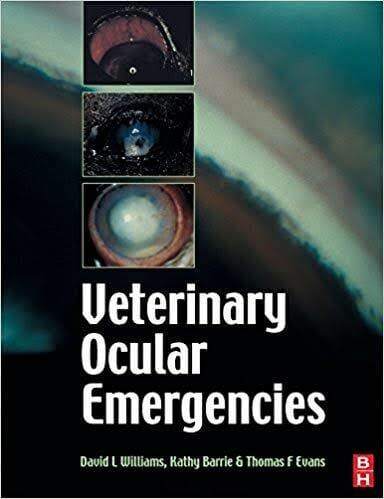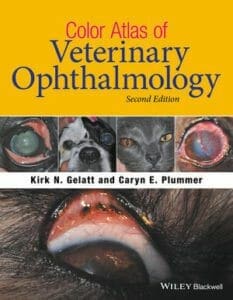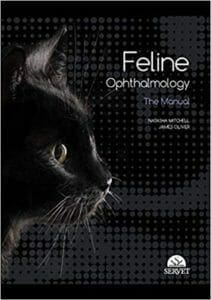FOREWORD
INTRODUCTORY CHAPTERS
CHAPTER 1: INTRODUCTION
1.1 How to use this book
1.2 Performing an ocular examination in an emergency situation
1.3 Recording observations made in an ocular emergency
1.4 Equipment and aids required to deal with the ocular emergency
1.5 Some preliminary notes on treatment of ocular infections
1.6 Analgesia in ocular emergencies
1.7 Dealing with ocular emergencies in horses and ruminants
1.7.1 Techniques facilitating large animal ocular examination
1.7.2 Techniques facilitating large animal ocular therapeutics
CHAPTER 2: A problem orientated approach
2.1: The red eye
2.2 The painful eye
2.3 The white eye
2.4 The suddenly blind eye
2.5 Ocular lesions in systemic disease
DIAGNOSIS AND TREATMENT OF OCULAR EMERGENCIES
CHAPTER 3: ADNEXA AND ORBIT
3.1: Lid laceration
3.2 Conjunctivitis
3.3 Conjunctival foreign body
3.4 Acute keratoconjunctivitis sicca
3.5 Orbital cellulitis
3.6 Orbital space occupying lesion
CHAPTER 4: GLOBE
4.1: Blunt trauma to the globe
4.2: Globe prolapse
4.3: Penetrating globe injury
CHAPTER 5: CORNEA
5.1: Corneal ulceration
5.1.1: Is an ulcer present? – the use of ophthalmic stains
5.1.2: Three key questions regarding any corneal ulcer
5.1.2.1 Ulcer depth
5.1.2.2 Ulcer healing
5.1.2.3 The cause of the ulcer
5.2 Dealing with different ulcers
5.2.1 The simple healing superficial ulcer
5.2.2 The recurrent or persistent non-healing superficial ulcer
5.2.3 Ulceration secondary to bullous keratopathy
5.2.4 Partial thickness stromal ulceration
5.2.5 Near-penetrating ulcers, descemetocoeles and penetrating ulcers
5.2.6.1 The melting ulcer: diagnosis
5.2.6.2 The melting ulcer: diagnosis
5.3 Corneoscleral laceration
5.3.1 Defining the extent of a corneal laceration
5.3.2 Defining involvement of other ocular structures
5.3.3 Repairing a simple non-penetrating corneal laceration
5.3.4 Repairing a simple perforating corneal laceration
5.3.5 Repairing a corneal laceration complicated by iris inclusion
5.4 Corneal foreign bodies
5.4.1 Recognising a corneal foreign body
5.4.2 Dealing with a non-perforating corneal foreign body
5.4.3 Dealing with a fully penetrating corneal foreign body
5.5 Antibiotics and mydriatic cycloplegia in corneal emergencies
CHAPTER 6: IRIS
6.1 Iritis
6.1.1 Diagnosis: clinical signs
6.1.2 Diagnosis: diagnostic tests
6.1.3 Treatment: pain relief
6.1.4 Treatment: anti-inflammatory medication
6.1.5 Treatment: reducing miosis and preventing synechia formation
6.2 Change in iris appearance
CHAPTER 7: GLAUCOMA
7.1 Diagnosis: clinical signs
7.2 Diagnosis: diagnostic tests
7.3 Treatment: immediate systemic hypotensive therapy
7.4 Treatment: long-term reduction of IOP
7.5 Treatment: neuroprotection
CHAPTER 8: LENS
8.1 Lens luxation
8.2 Diabetic cataract
8.3 Lens capsule rupture and phacoanaphylactic uveitis
CHAPTER 9: RETINA AND VITREOUS
9.1 Retinal detachment
9.1.1 Examination of the animal with a retinal detachment
9.1.2 Treatment of retinal detachment secondary to hypertension
9.1.3 Treatment of retinal detachment in posterior uveitis
9.1.4 Treatment of idiopathic retinal detachment
9.2 Sudden acquired retinal degeneration (SARD)
CHAPTER 10: OPTIC NERVE
10.1 Optic neuritis
10.2 Central blindness
CHAPTER 11: CONCLUSIONS
APPENDIX:
Section 1: Diagnostic methods used in veterinary ophthalmology
Section 2: Ocular Dictionary
Section 3: Ocular Formulary















![Ettinger’s Textbook of Veterinary Internal Medicine 9th Edition [PDF+Videos] Ettinger’s Textbook of Veterinary Internal Medicine 9th Edition [True PDF+Videos]](https://www.vet-ebooks.com/wp-content/uploads/2024/10/ettingers-textbook-of-veterinary-internal-medicine-9th-edition-100x70.jpg)

![Textbook of Veterinary Diagnostic Radiology 8th Edition [PDF+Videos+Quizzes] Thrall’s Textbook of Veterinary Diagnostic Radiology, 8th edition PDF](https://www.vet-ebooks.com/wp-content/uploads/2019/09/textbook-of-veterinary-diagnostic-radiology-8th-edition-100x70.jpg)






